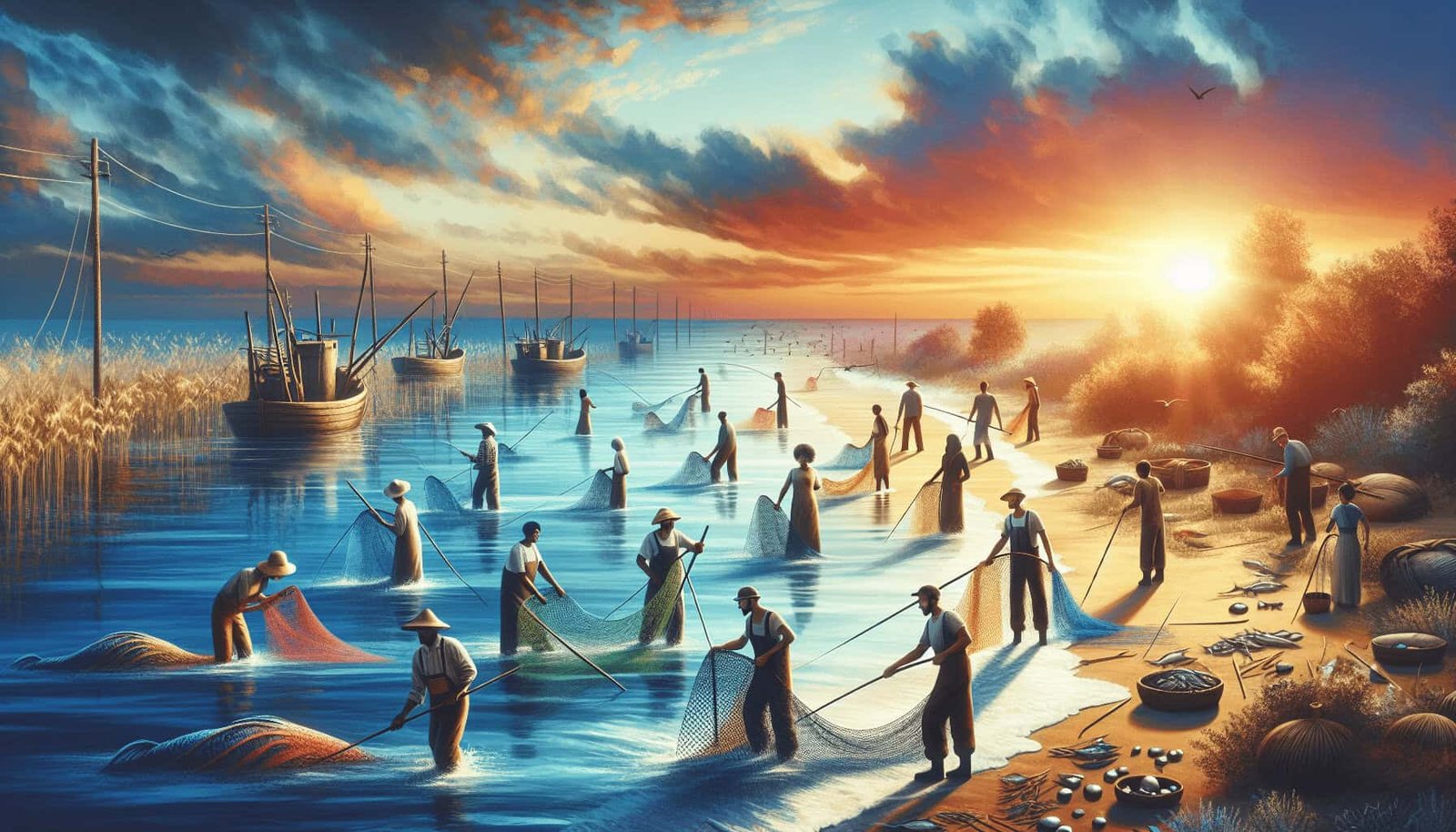Have you ever wondered what life is like for the people who make their living from the sea? Knowing how to learn about traditional fishing methods and sustainable practices used by local communities near the beaches can open up a world of fascinating history, culture, and practical knowledge. Let’s explore the best ways to acquire this comprehensive understanding that can also contribute towards environmental sustainability and revitalizing local economies.
Understanding Traditional Fishing Methods
What Are Traditional Fishing Methods?
Traditional fishing methods have been developed over centuries and passed down through generations. These methods are usually eco-friendly, designed to harvest fish in a way that allows marine populations to replenish naturally. Whether it’s using specific types of nets, traps, or even fishing by hand, each method has a story and a set of specialized skills behind it.
Why Learn About Traditional Fishing Methods?
Understanding these fishing techniques not only gives you a glimpse into a community’s way of life but also offers insights into their history and the biodiversity of the region. These methods are often more sustainable compared to modern industrial fishing, making them crucial for environmental conservation.
Popular Traditional Fishing Methods
Here’s a brief overview of some traditional fishing techniques you might come across:
| Method | Description |
|---|---|
| Net Fishing | Using various types of nets to capture fish, often done in shallow waters. |
| Handlining | Fishing with a single fishing line, hook, and bait, practiced globally. |
| Spearfishing | Using a spear or trident to catch fish, often while snorkeling or diving. |
| Fish Trapping | Using cages or baskets to trap fish, commonly used in rivers and coastal areas. |
Getting Involved with Local Communities
Engaging Local Fishermen
One of the best ways to learn is by interacting directly with local fishermen. These individuals can provide you with hands-on experience and show you the traditional methods they use. Here are some ways to establish a connection:
- Visit Fishing Docks: Spend some time at the local fishing docks. Fishermen are often willing to share their stories and techniques if approached respectfully.
- Hire Local Guides: Many coastal areas offer guided fishing tours. Hiring a local guide can provide an educational yet sustainable fishing experience.
- Participate in Fishing Festivals: Many communities have annual fishing festivals where traditional techniques are showcased. This can be a perfect opportunity to learn and enjoy local culture.
Supporting Local Communities
Learning about these methods isn’t just beneficial for you; it also supports the local communities. Purchasing fish directly from local fishermen or supporting markets that buy from them can help sustain their livelihoods.

Sustainable Practices
What is Sustainable Fishing?
Sustainable fishing aims to maintain fish populations at healthy levels and minimize environmental impact. It involves practices that do not deplete fish stocks and cause the least harm to the ecosystem.
Practices to Look Out For
The local communities often utilize methods that promote sustainability. Here are some practices to be aware of:
- Selective Fishing: Targeting specific types of fish to avoid overfishing endangered species.
- Seasonal Fishing: Fishing during certain seasons to give time for fish populations to regenerate.
- Limit Catch Sizes: Abiding by regulations that limit the amount of fish caught per trip to prevent overharvesting.
How to Facilitate Sustainable Practices
Supporting sustainability involves being an educated consumer and participant. Here are some tips:
- Learn the Local Regulations: Understand the fishing regulations in the area you’re exploring.
- Purchase Responsibly: Buy fish that are caught using sustainable methods.
- Educate Others: Share what you’ve learned with others to promote sustainable fishing practices.
Tools and Equipment
Traditional Fishing Gear
Traditional fishing gear varies widely depending on the region. Some of the most common types include:
- Bamboo Rods: Simple and effective, often used in freshwater fishing.
- Fish Nets: Various kinds, including cast nets and gill nets, tailored to specific conditions and types of fish.
- Spears and Tridents: Utilized in spearfishing, requiring skill and precision.
Modern Enhancements to Traditional Methods
In some communities, modern technology has been integrated into traditional practices to improve efficiency while maintaining sustainability. These enhancements can include:
- Eco-friendly Motors: Using cleaner engines for boats.
- Improved Nets: Designed to reduce bycatch and avoid capturing unwanted marine life.
- GPS and Sonar: Helps in locating schools of fish while minimizing environmental disturbance.

Cultural Significance
Historical Context
Traditional fishing methods are often deeply rooted in the history of a community. These techniques have been adapted over time, reflecting changes in environment, technology, and societal needs. Knowing this historical context can enhance your appreciation and understanding.
Symbolism and Traditions
In many cultures, fishing methods come with a variety of rituals and beliefs. For example, specific methods might be reserved for certain times of the year or particular community members. Engaging with these cultural practices can offer a holistic view of the community’s way of life.
Educational Programs
Some regions offer educational programs that focus on the cultural aspects of traditional fishing methods. These programs can range from workshops and lectures to field trips and hands-on training sessions.
Environmental Impact
Benefits of Traditional Methods
Traditional fishing methods usually have a lower environmental impact compared to modern industrial techniques. Benefits include:
- Preventing Overfishing: Due to smaller scale operations.
- Preserving Marine Habitats: Less destructive to the seabed and surrounding ecosystem.
- Lower Carbon Footprint: Typically rely on smaller boats and manual labor.
Negative Impacts to Avoid
However, not all traditional methods are sustainable, particularly when scaled up. Be wary of:
- Bycatch: Unintentional capture of non-target species.
- Habitat Destruction: Some methods can still damage fragile marine environments.
- Overharvesting: Even small-scale methods can become destructive if not managed properly.

Practical Steps to Get Started
Research and Prepare
Before you set off to learn about these techniques, it’s essential to do some homework. Here are some steps to prepare:
- Study the Region: Learn about the local communities, their history, and the specific fishing methods used.
- Equip Yourself: Get the necessary gear according to the traditional methods.
- Understand Local Laws: Ensure that you comply with local fishing regulations to avoid any legal issues.
Hands-On Learning
Practical experience is invaluable. Here’s how you can get hands-on:
- Volunteer: Join local conservation groups or initiatives.
- Apprentice: Find a mentor within the community who can guide you through the learning process.
- Join Workshops: Participate in workshops or training sessions focused on traditional fishing methods.
Ethical Considerations
Remember to approach this learning journey with respect for the local culture and environment. Ensure that your actions do not harm the community or the ecosystem.
Documenting Your Journey
Keeping a record of your experiences can be beneficial for future reference and sharing your knowledge. Consider keeping a journal, taking notes, or creating a video diary.
Looking Forward
Future of Traditional Methods
As the world becomes increasingly conscious of environmental issues, there is growing interest in reviving and sustaining traditional fishing methods. These practices offer valuable insights into sustainable living and biodiversity conservation.
Connecting with Broader Movements
Linking your efforts with broader environmental and sustainable fishing movements can amplify their impact. Join global initiatives, participate in forums, and collaborate with NGOs focused on marine conservation.
Continuous Learning
Learning about traditional fishing methods and sustainable practices is an ongoing journey. Stay curious, keep exploring new methods, and always strive to improve your understanding and practices.

Conclusion
Learning about traditional fishing methods and sustainable practices used by local communities near the beaches is a rewarding experience. It not only enriches your knowledge but also supports local traditions and contributes to environmental sustainability. By immersing yourself in local cultures, engaging with community practices, and promoting sustainable fishing, you create a positive impact on both people and the planet. So, take that first step; start learning, sharing, and supporting the incredible wealth of knowledge preserved in these age-old traditions.